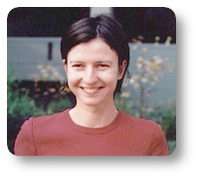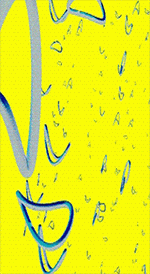The New New Math of String Theory

At the beginning of the last century, Albert Einstein posited a now famous theory that forever linked geometry and fundamental physics. According to general relativity, spacetime is curved, and that curvature affects the behavior of matter, and vice versa.
However, Einstein couldn't contend with quantum mechanics. At that small scale, classical geometry—the stuff we all learn in elementary school—breaks down. What replaces it? Mathematical physicists, like UC Berkeley professor Mina Aganagic, are still figuring that out.

"The basic question is what does geometry look like at very short distances?" says Aganagic, who holds a joint appointment in the Department of Physics and Department of Mathematics.
The distances that Aganagic delves into are on order of the Planck scale, 10 to the minus 33 centimeters, the smallest unit of space in our universe. That's where classical geometry, which goes hand-in-hand with classical physics, fails us and the spectacular idea of string theory emerges.
String theory attempts to unite Einstein's general theory of relativity and quantum mechanics under one umbrella, or "theory of everything," that explains all of the fundamental forces and particles in our universe. According to string theory, all elementary particles are tiny vibrating strands of energy. In mathematical terms, points, which are elementary objects in classical geometry, aren't really point-like at all.
"If you could look at them from far away, they'd look like points," Aganagic says. "But if you get close enough, you'd realize that they're really one-dimensional loops."
Unlike the three-dimensional world that we perceive, these loops of string vibrate in ten dimensions. Every kind of particle and force corresponds to the particular vibrational pattern of a string. While there is no experimental proof yet that string theory is correct, Aganagic says that putting the physics through the mathematical ringer is not entirely unlike experimental verification.
"You could say that what we're discovering is quantum geometry," she adds.
For example, one problem she has investigated involves calculating the entropy of black holes. According to classical physics, material that falls into a black hole could vanish from our universe entirely, violating the Second Law of Thermodynamics. However, string theory provides a "fantastically clever way of solving the problem," Aganagic says, without violating any fundamental laws of nature.
"Unlike in Einstein's time when the relevant mathematics was already in existence, the mathematics we need now hasn't been fully developed yet,& Aganagic says. "This time around, math and physics are being discovered in parallel."
Credit: Writer: David Pescovitz
Publication: ScienceMatters@Berkeley
Published with permission




















